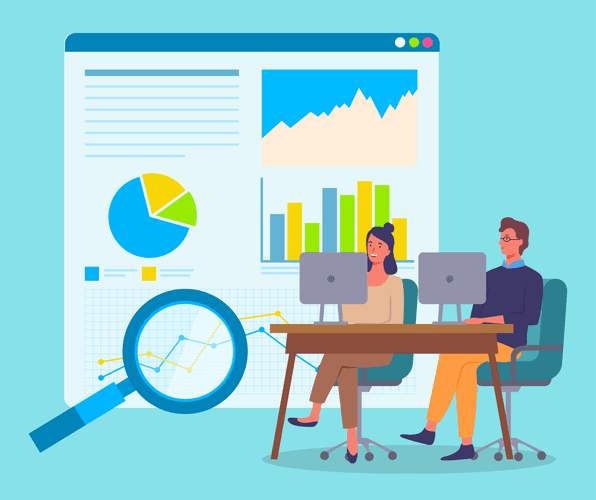
Misclassifying these costs can lead to distorted financial analysis and decision-making. Fixed overhead costs, which include depreciation, rent, and insurance, are considered non-cash expenses. They do not directly drain cash flow, unlike variable costs like materials. Proper cost classification provides better financial analysis and supports decision-making on pricing products, controlling production costs, budgeting expenses, and evaluating departmental performance. According to the Matching Principle, all expenses are matched with the revenue of a particular period.
- Period costs are costs that cannot be capitalized on a company’s balance sheet.
- „This change is helping people find better opportunities, with rising salaries in many developing economies,“ the Deel report says.
- Managing period costs requires a multifaceted approach that considers immediate financial implications, long-term strategic goals, and the broader market context.
- In FIFO, old costs of the beginning inventory are moved out all at once, so they don’t mix with current costs.
- By implementing effective cost allocation methods, businesses can gain insights into their cost structure, enhance decision-making capabilities, and ultimately drive sustainable growth and profitability.
Period costs:
- This shift is also driven by the need to fill roles that U.S.-based workers alone can no longer meet.
- When the products are sold, these costs are expensed as cost of goods sold.
- Effective budgeting helps organizations allocate resources efficiently, ensuring that funds are available for essential activities, such as marketing and research and development.
- Therefore, businesses typically establish and adhere to their own criteria.
- Additionally, businesses must periodically assess the carrying value of assets for impairment and adjust depreciation estimates as needed to reflect changes in asset values or useful lives.
Moreover, it helps authorities identify the irrelevant unavoidable costs that will always consider period costs reaching the breakeven point. Below is a break down of subject weightings in the FMVA® financial analyst program. As you can see there is a heavy focus on financial modeling, finance, Excel, business valuation, budgeting/forecasting, PowerPoint presentations, accounting and business strategy. Compare current account and saving account options to find the best fit for your financial needs, goals, and lifestyle. This involves periodically assessing the carrying value of assets for impairment and adjusting depreciation estimates as needed to reflect changes in asset values or useful lives. Analyzing trends in Period Costs allows stakeholders to identify cost-saving opportunities and assess cost management effectiveness.

Direct labor

This agility helps businesses remain competitive and financially healthy in a dynamic economic environment. Now that we have taken a bird’s eye view of the matching principal, let’s look into the meanings of and difference between product costs and period costs. The preceding list of period costs should make it clear that most of the administrative costs of a business can be considered period costs. The balance sheet is another critical financial Sales Forecasting statement product costs relate to.
Product Costs vs Period Costs: What Are the Differences?

It allows for a better assessment of profitability and operational efficiency, providing insights into areas where cost control measures could be implemented for improved financial performance. The product costs for a retailer will be the amount paid to the supplier plus any freight-in. Product costs for a manufacturer will be the direct materials, direct labor, and manufacturing overhead used to manufacture a product.

Direct materials are those materials used only in making the product and there is a clear, easily traceable connection between the material and What is bookkeeping the product. For example, iron ore is a direct material to a steel company because the iron ore is clearly traceable to the finished product, steel. The main characteristic of these costs is that they are incurred over a period of time (during the accounting period). Depreciation expense is calculated using various methods such as straight-line depreciation, declining balance depreciation, and units of production depreciation. The choice of depreciation method depends on factors such as asset usage patterns, expected future cash flows, and accounting policies.
- By leveraging Period Cost data in decision-making processes, businesses can enhance operational efficiency, mitigate risks, and achieve sustainable growth and profitability in the long term.
- Another way to identify period costs is to establish what doesn’t qualify as such.
- These costs remain relatively constant each month, regardless of production volume.
- What is important to note about these product costs is that they attach to inventory and are thus said to be inventoriable costs.
- Product Costs are essential for calculating the cost of goods sold and determining the gross profit margin of a business.
This is in accordance with the matching principle of accounting, which dictates that expenses should be matched with the revenues they help to generate in the same period. If no direct connection to revenue can be established, the costs are recognized in the period they arise. For instance, office rent is recorded as an expense in the month it is paid, irrespective of the sales activities of that month. This treatment ensures that the financial statements accurately reflect the company’s operational costs and help in assessing its profitability during a specific accounting period.
In other words, product costs are the expenses incurred to produce something. Explore the role of period costs in financial management, from accounting practices to strategic pricing and budgeting, for informed business decisions. Weighted-average costing mixes current period expenses with the costs from prior periods in the beginning inventory. This mixing makes it impossible for managers to know the current period expense of manufacturing the product.
How Barcode Inventory Software Can Reduce Inventory Shrinkage
These costs directly impact net income and profitability, as they are deducted from total revenue during the accounting period in which they are incurred. Misclassifying costs can lead to distorted financial analysis, affecting management decisions and strategic planning. Therefore, businesses must consistently review their financial reporting period costs to ensure accurate representation of their financial health. In the realm of accounting and finance, period costs represent those expenses that are not directly tied to the production process but are incurred within a specific time frame. These costs are pivotal in strategic decision-making as they can significantly influence the financial health of an organization.
